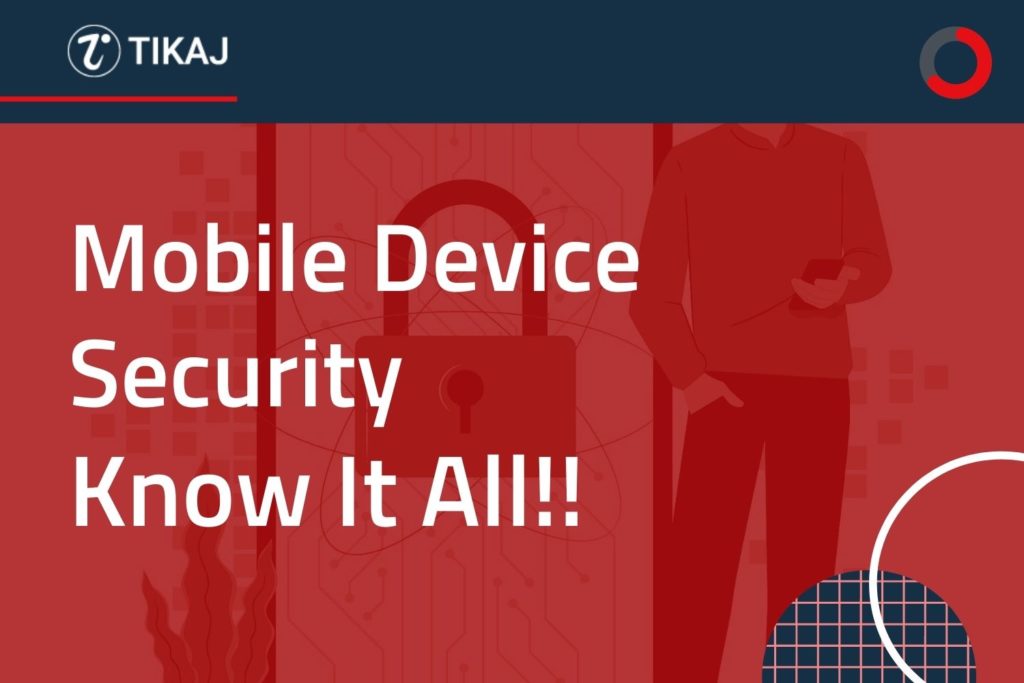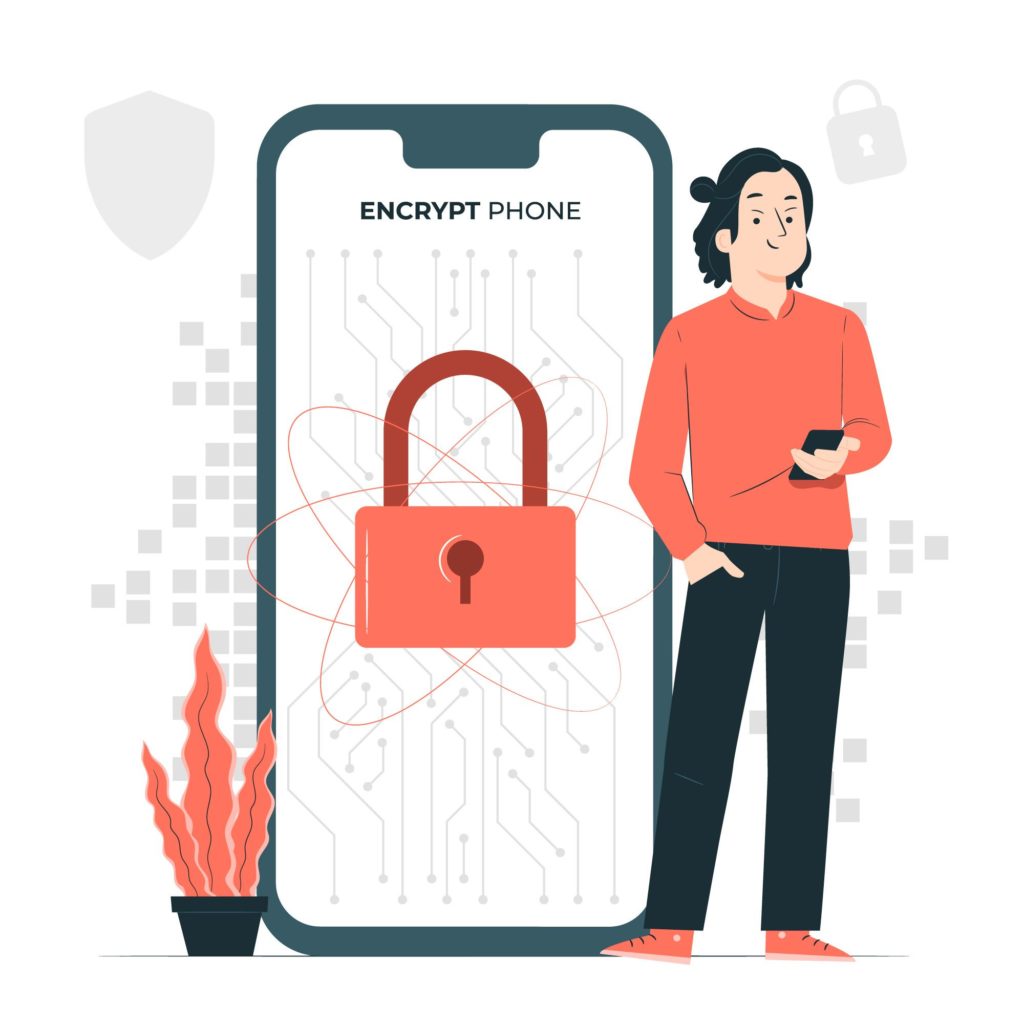5 Ways to Boost Mobile Device Security – Know It All!!

Mobile device security have become an increasingly vital component of many organizations’ IT infrastructure as there is a constant advancement in technology. Since, the onset of pandemic and employees moving to remote work has made mobile devices the most convenient choice for most employees to work from the comfort of home.
However, regardless of how convenience mobile devices offer, they also tend to hold significant security risks. As they become “critical infrastructure” for organizations, mobiles being the most portable device comes with major security concerns as there are increase in numbers of loose ends that are open everywhere.
Reasons Why Mobile Device Security Is Important?
With Pandemic increasing the workload from the comfort of our homes, more than half of business PCs now mobile, portable devices present distinct challenges to network security, which must account for all of the locations and uses those employees require of the company network. Phishing scams, malicious mobile apps, spyware, data leakage, and unsecured open Wi-Fi networks are a few potential threats that can happen anytime.
Read what is happening around the globe: https://www.abc.net.au/news/2021-09-28/phone-scams-exploding-vulnerable-australians-new-data/100496496

Major Factors Of Concern Related To – Mobile Device Security
With mobile device security becoming increasingly important, it has also received additional attention from cybercriminals. Resulting in increased diversity in cyber threats against these devices. The 5 major concerns are:
1. Malicious Websites and Apps
Just like any desktop or computer, mobile devices also have software and Internet access. Mobile malware and malicious websites can complete the same objectives on mobile phones as on traditional computers.
There are numerous ways Malicious apps come, as it has a variety of different forms. Trojans are one of the most common types of malicious apps that can click scams and perform ads.
2. Mobile Ransomware
Mobile Ransomware has made a different position for itself during the pandemic, it was earlier not as common and damaging malware variant as it is now. Mobile ransomware encrypts files on a mobile device and then the threat actor asks for a ransom payment for the decryption of the data, post which you can restore or/and your encrypted data.
3. Phishing
Phishing is such an attack that we have heard about for decades, phishing is the most common attack vector in existence. 94% of cyberattacks start with mere phishing mail that might carry some suspicious link or attachments containing malware. Mobile devices have n number of ways in which phishing can happen and delivering malware becomes easy ranging from email, SMS, social media and other mobile application.
4. Man-in-the-Middle (MitM) Attacks
Eavesdrop happen in cyberattacks too, Man-in-the-Middle (MitM) is one such attack that involves an attacker intercepting network communications to modify the data being transmitted or simple fetch things happening in your network. Mobile devices are especially susceptible to MitM attacks, but these attacks can happen on any other system too. SMS messages have specific limitations and can be easily intercepted unlike Emails that are encrypted by HTTPS, and mobile applications may use unencrypted HTTP for the transfer of potentially sensitive information.
5. Device and OS exploits
Oftentimes security experts’ only focus is the top layer of software leaving behind the lower level of the software stack that is equally susceptible and contains vulnerabilities and can be attacked too. Vulnerabilities in the mobile OS or the device itself can be exploited by an attacker just like computers. Since these attacks exist below and outside the visibility of the device’s security solutions they are more damaging than higher-level ones.
Solutions To Prevent Mobile Devices Security
To provide complete securing, mobile devices require a multi-layered approach and investment in enterprise solutions. As every mobile device is unique so should be the security, each organization needs the key elements that best fit their network.
Here are some best mobile security practices:
1. Clarity Among Policies And Processes
Mobile device rules are only as effective as a company’s ability to properly communicate those policies to employees. Mobile device security should include loud and clear rules about:
• What devices can be used
• What OS levels are allowed
• Education regarding what the company should and cannot/shouldn’t access on a personal phone
• Whether is it possible for an IT to remote wipe a device
• Password requirements and frequency for how often passwords needs to be updated
2. Password Protection
Password is an amazing way to keep all unauthorized access away from your mobile device. A strong and weak password is a continuous debate. Even today a weak password can lead to data hacks. Using the same password everywhere because it is difficult to remember is a major security issue and good education can help you rectify it. So, it becomes even more important that employees create strong, unique passwords (of at least eight characters) and create different passwords for different accounts rather than repetitive passwords.
3. Biometrics
Biometric authentication has become a new way for mobile access security. Biometric are safer alternative as it uses measurable biological characteristics, such as the face, fingerprint, voice, or iris recognition for identification and access that are unique for every individual. Multiple biometric authentication methods are now available on smartphones and are easy for workers to set up and implement. Relying on traditional methods of mobile access security, such as passwords is no longer safe as attackers can easily guess it with few probabilities.
4. Avoid Public Wi-fi
A mobile device is equally secure as the network through which it transmits data. Proper education to employees regarding the dangers of using public wifi networks, which can be easily breached by threat actors. Threat actors can steal your data and access your network, vulnerable devices should be better-taken care of. The best defence is to encourage smart user behaviour and strictly prohibit the use of open Wi-Fi networks, no matter how much convenient it is.
5. Mobile Device Encryption:
Users need to locate this feature on their devices and enter a password to encrypt their devices as most mobile devices are bundled with a built-in encryption feature. Encryption converts the data into a code that only authorized users can access. It prevents unauthorized access and blocks threats.
Benefits Of Mobile Devices Security
- Regulatory compliance
- Security policy enforcement
- Support of “bring your own device” (BYOD)
- Remote control of device updates
- Application control
- Automated device registration
- Data backup
Above all, mobile device security protects an enterprise from unknown or malicious outsiders being able to access the company’s sensitive data.
Keep yourself engrossed with similar blogs, click – https://www.tikaj.com/blog/10-steps-to-shield-your-organization-from-cyber-threats/






